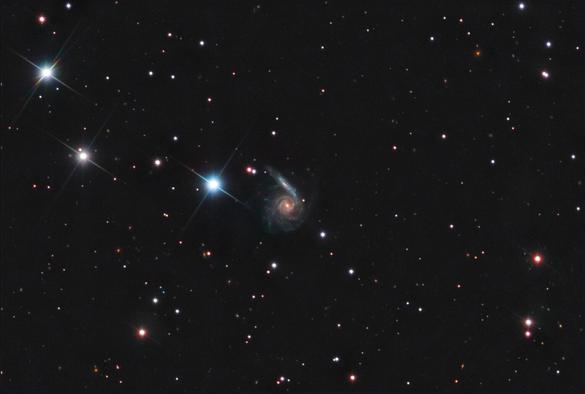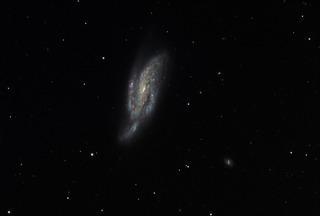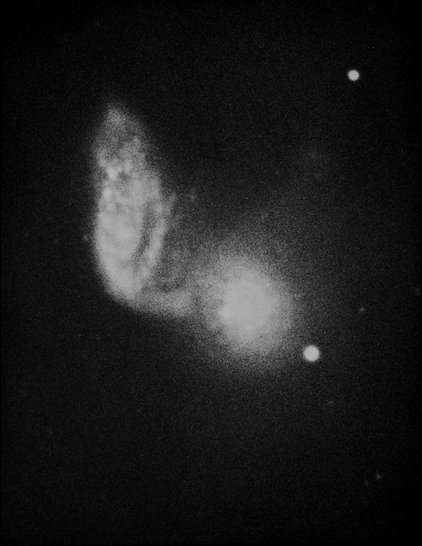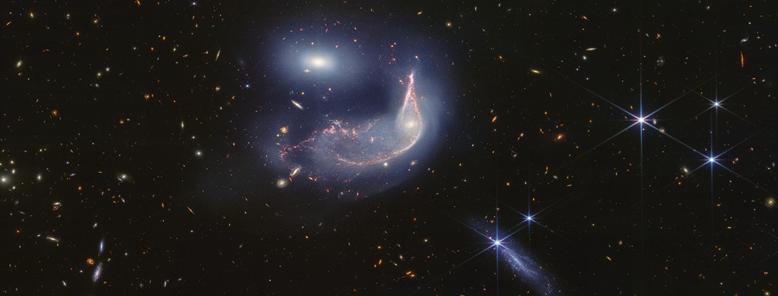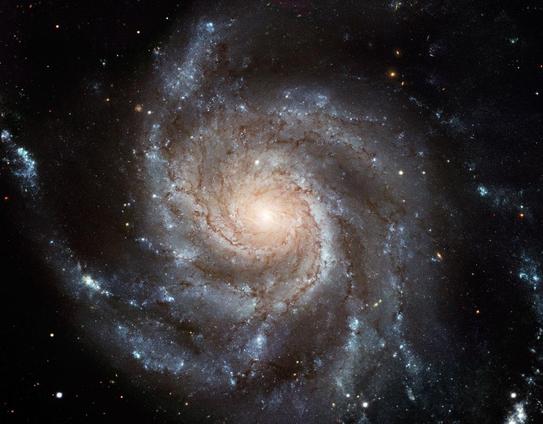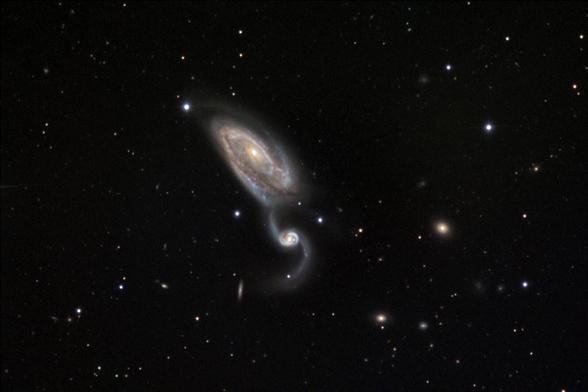SDSS image of Arp 82, also known as NGC 2535 and NGC 2536.
Simulations suggest the two galaxies are in the early stages of a merger. The pair already experienced one collision and are just about to collide again.
The larger galaxy's inner arms have evenly spaced "beads on a string" star clusters. This suggests the recent gravitational interactions created shocks that led to a burst of star formation.
Credit: SDSS
Source: https://www.legacysurvey.org/viewer?ra=122.8074&dec=25.2048&layer=sdss&zoom=13

